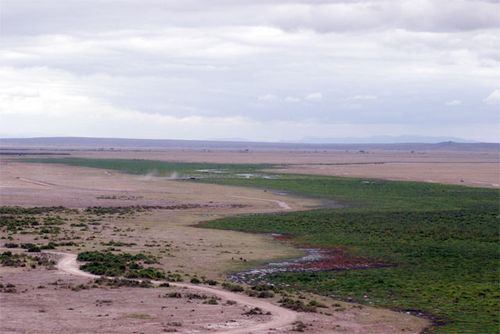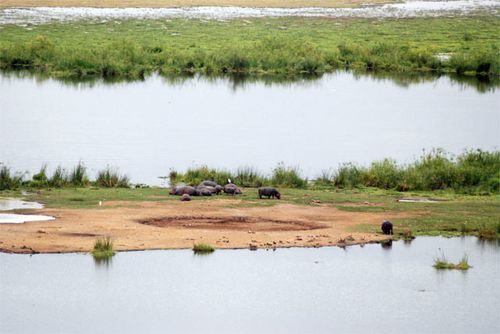As you may remember, I have been fortunate enough to receive a grant to go to Africa. The organization that awarded me the grant is Earth Expeditions. It is a project developed and administered by the Cincinnati Zoo & Botanical Garden and Miami University's* Project Dragonfly*. They have programs in seven different countries, including Thailand, Belize, Costa Rica, Trinidad, Mongolia, Namibia, and Kenya. The purpose of Earth Expeditions is to educate people about the ecology and culture of other countries using an inquiry-based approach and then take that knowledge and apply it to our own communities. Each program includes a visit to another country where you can meet the people, examine the environment, and help with a local conservation project.I was lucky enough to be selected to go to Kenya, which is in eastern Africa. If you are wondering what Africa has to do with Antarctica, then you should know that both continents have similarities. They both are desert continents. They also both have conservation issues that can apply to our own communities.
Kenya is a beautiful place that has many amazing features. The land can be flat...
 A stretch of flat land in Amboseli National Park in Kenya, Africa.
A stretch of flat land in Amboseli National Park in Kenya, Africa.
...it can be full of vegetation...
 Some of the landscape in Kenya is filled with trees and scrubs and even a small stream.
Some of the landscape in Kenya is filled with trees and scrubs and even a small stream.
...or it can even have mountains.
 The landscape is often overshadowed by mountains that loom up suddenly.
The landscape is often overshadowed by mountains that loom up suddenly.
Just like Antarctica, Africa is a very dry continent. However, there are patches of green vegetation.
 You can drive for miles and miles and see only brown vegetation but then suddenly there is a patch of luscious, green vegetation.
You can drive for miles and miles and see only brown vegetation but then suddenly there is a patch of luscious, green vegetation.
This vegetation is the result of streams and rivers that cut across the continent of Africa. They are shrinking every year. This water is from snow that melts on top of Mount Kilimanjaro and runs down into the land below. The amount of snow on Mount Kilimanjaro is decreasing and as a result the amount of water that is available to the animals below is also decreasing.
 It is fortunate that there are areas of water throughout the dry landscape of Kenya.
It is fortunate that there are areas of water throughout the dry landscape of Kenya.
It is important that you look carefully at the world around you. Sometimes there are things that can only be seen if you really try. Look at this close-up of the previous picture. Did you realize that there was a group of hippopotamuses?
 A group of hippopotamuses are sunbathing on the banks of the water. Do you see the babies?
A group of hippopotamuses are sunbathing on the banks of the water. Do you see the babies?
It is also amazing to see how nature uses what it has available. The acacia tree is an important component of the African environment. It has many uses and is even food for the giraffe. Another animal that uses the acacia tree is the termite. A colony of termites will form a mound that can be over twelve feet high. Sometimes, the termites will build the mound around an acacia tree. It is beautiful, but I'm not sure that it is good for the acacia tree.
 Colonies of termites will create mounds throughout the landscape of Africa, including some that are over twelve feet tall.
Colonies of termites will create mounds throughout the landscape of Africa, including some that are over twelve feet tall.
Birds also utilize the many acacia trees in Africa as a site for their nests.
 Birds will build nests in trees, on the ground, or on mountain ledges.
Birds will build nests in trees, on the ground, or on mountain ledges.
Africa is an amazing place. It has many beautiful different landscapes and each is unique. Perhaps one of the most wondrous sites in the world is Mount Kilimanjaro. It is the tallest mountain in Africa and lies on the border of Tanzania and Kenya, just south of the equator. It truly is an incredible site. Don't you agree?
 One of the most beautiful sites in Africa is the majestic Mount Kilimanjaro that is also a pivotal component of the local ecology.
One of the most beautiful sites in Africa is the majestic Mount Kilimanjaro that is also a pivotal component of the local ecology.
Another thing that makes Africa such an amazing place is the huge variety and number of animals that live in the wild. Check out the next journal entry to see pictures of some of the animals I was privileged to see.

